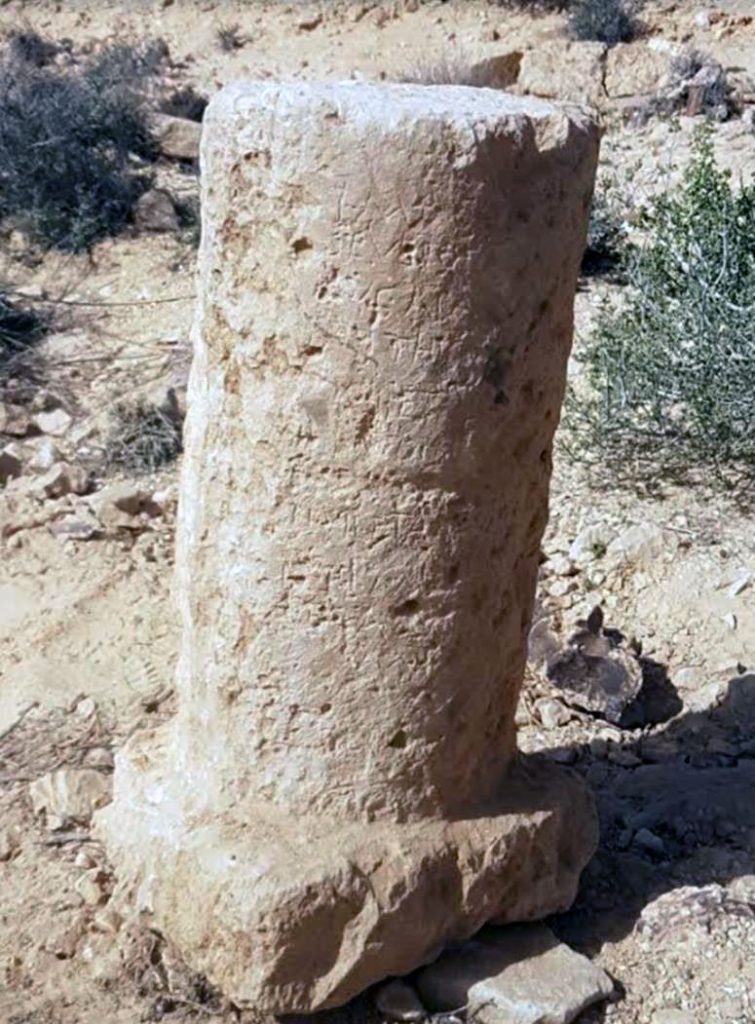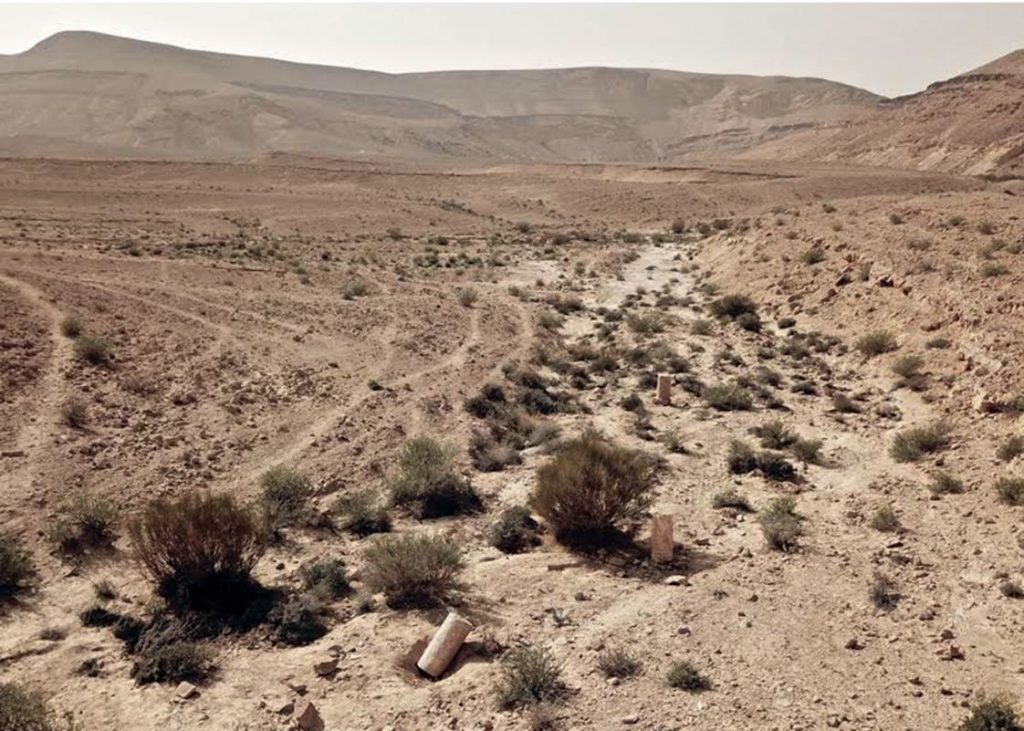In 1965–1966 a pioneering survey was carried out along the incense route between Oboda and the Nabataean caravansary in Sha‘ar Ramon by Zeev Meshel and Yoram Tsafrir.
Meshel and Tsafrir noted two segments of a wide built road, along which were 11 milestone stations – five on the Nafha Plateau (south of Oboda) and six in Makhtesh Ramon. Among the 11 milestone stations, usually two at each station, they did not record even one inscription. Meshel and Tsafrir dated the road and the milestones to the Nabataean period; other researchers subsequently dated them to the Roman period after 106 CE, when the Nabataean Kingdom became the Roman province of Arabia. In their survey Meshel and Tsafrir noted that the two segments of the road and their milestones were about seven km apart in the area of Mount Grafon. They surmised that the two segments were linked and proposed a route for that link, although they found no ancient remains along that presumed segment.
A New Discovery
We now have a new section of the Incense Route in the Negev between the Mahmal Ascent and the Mount Grafon area. Along this section six milestone stations were detected. In two stations three milestones were found, in another station two milestones were noted and at the other three stations we found only one milestone left. At four stations we found milestones with inscriptions. At Grafon 2 (numbering from south to north) a stone was found with 3–4 barely legible lines. At Grafon 3 were two almost complete inscriptions, at Grafon 4 only a few letters survived, and at Grafon 6 a few lines were visible.

Photos of the inscriptions were given to Prof. Benjamin Isaac, head of the Israel Milestone Committee. In an initial reading he identified one inscription from the reign of Emperor Partinax (r. 193–194 CE) and another of Septimius Severus (r. 195–198 CE). In this initial stage of the research distances or place names in the inscriptions have not been identified. It should be noted that the southernmost milestone station in the new section (Grafon 1) was found one Roman mile away from the northernmost milestone station in Makhtesh Ramon. The northernmost milestone station in the new section was found in two Roman miles away from the southernmost milestone station on the Nafha Plateau. We now know of 17 milestone stations between Oboda and the Nabataean caravansary in Sha’ar Ramon. East of that caravansary, toward Wadi Araba and onward to Petra, we have no record of more milestones or long stretches of a wide built road.
The inscription mentioning Septimius Severus is quite interesting. Along the Incense Route in the Negev commercial structures related to the road were erected during the days of the Nabataean Kingdom and military structures related to the road were built in the Roman period, after 106 CE. Tali Gini-Erikson has suggested that the military watchtowers along the Incense Route in the Negev were added at the time of the Severan emperors. Nabatean trade from Petra to Gaza continued during the second and part of the third century CE under the auspices and defense of the Roman province of Arabia. Of course, the new inscriptions strengthen her suggestion. From Ben Dolika’s research we learn that Septimius Severus was in Arabia, perhaps during a military campaign. Many questions remain open, and hopefully a full-scale survey will be done along the new section. Though part of the new section is in a military firing zone, I trust that it will marked as a route that can be hiked along stretches of the Incense Route, undamaged by modern unpaved roads. Hopefully all parts of the new section will be annexed to the nature reserve, which will protect it from modern damage and enable hikers to enjoy the ancient route.

